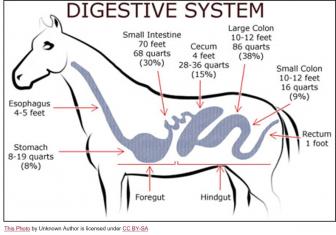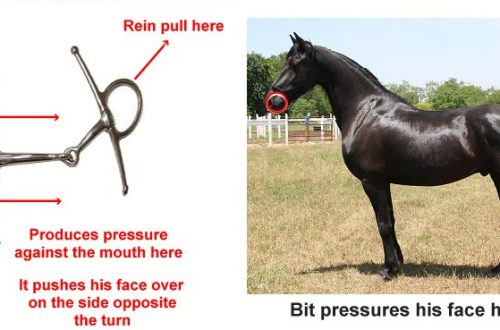
Questions of education: how to instill good manners in a horse … rump?
Questions of education: how to instill good manners in a horse … rump?
Horses with bad manners are a threat to all those around them, and even to themselves. But how to fix the situation?
The advantage of a powerful hindquarters for a horse is that one lightning strike with the hoof can end an argument with a mountain lion. Instantly. Unfortunately for us humans, the outcome of such a strike, whether intentional or not, could be disastrous.
An untrained horse interprets the actions of people (including farriers)) as a potential threat. While many equestrians understand the importance of desensitizing and training a horse, they often miss the one critical point that makes a horse safer when it comes to hindquarter manipulation.
A horse that is suspicious of everything that happens around its tail is a problem, because over time such a horse can very likely turn into a monster. Bad behavior based on fear or disrespect can lead to an explosive incident and a real danger to people. With a significant degree of probability, people who provide horses with certain services (for example, a groom, a farrier or a veterinarian) will fall under the distribution. But it is not their duty to risk their lives, nor to teach the horse manners. Thus, an ill-bred horse may find himself without the help he needs.
There is a common misconception that the owner believes that his horse has good manners because he stands still when he is saddled and does not break out when he is led into the levada. But the same horse constantly trying to hit the farrier…
Interestingly, if you take a horse like this and start working on desensitizing and training exercises that are specific to the hindquarters, the gaps become apparent. A frightened horse will act to protect itself because it relies on its hindquarters and does not want to be in a vulnerable state. A spoiled horse will act aggressively because it is used to using its hind legs to assert its dominance and gain power.
The manners of horses depend only on how well we work on them, on our training. If we don’t help horses understand our expectations, they won’t.
Below I will list five main signs that tell us that the horse will behave correctlyif it comes to her ass.
1. First of all, I pay attention to the position of the hind limbs, to whether the hind legs cross. If you ask a horse to rein (yield to pressure), he will rein in by crossing his legs, as seen in the photographs below. By asking the horse to yield to pressure, you move his hindquarters, establishing control over him and confirming your leading position.
2. I’m working on building confidence so that the horse stays calm when someone approaches his hindquarters, no matter how fast he’s moving. Whether the person is moving towards or away from the horse, into or out of sight, the horse must remain calm.
3. The horse must accept both “hard” and “light” touches on the thighs, tail, hooves, hocks, and especially the vulnerable belly area. The horse must suppress defensive instincts that could harm someone, he must not protect his personal space from you.
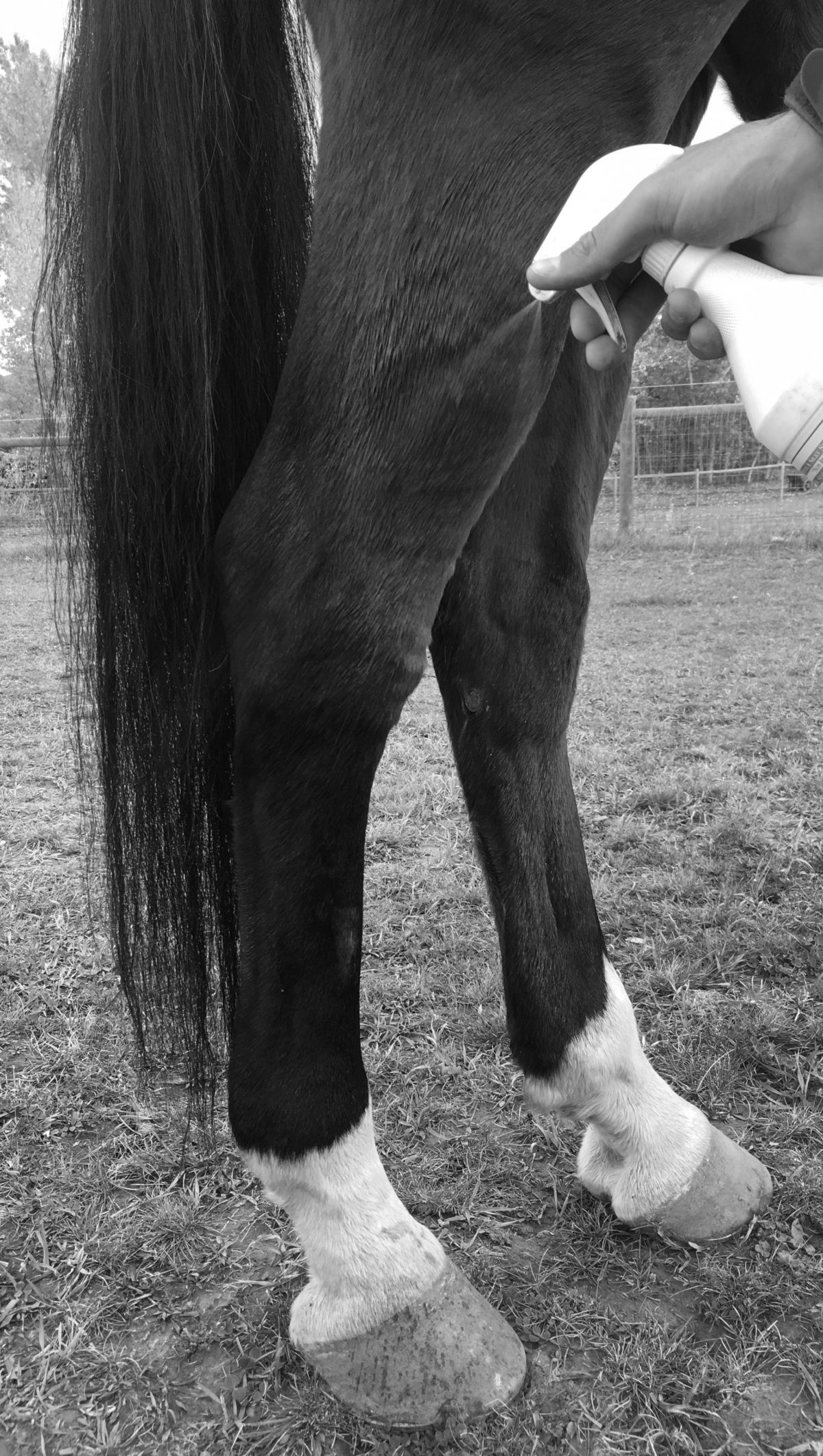
4. The horse should not try to startle or raise its legs threateningly when you spray it from behind (for insects). Flies that disturb the horse in the hindquarters encourage him to kick more actively with his hind legs, so by getting rid of them, you will reduce the risk of being hit by a hoof.
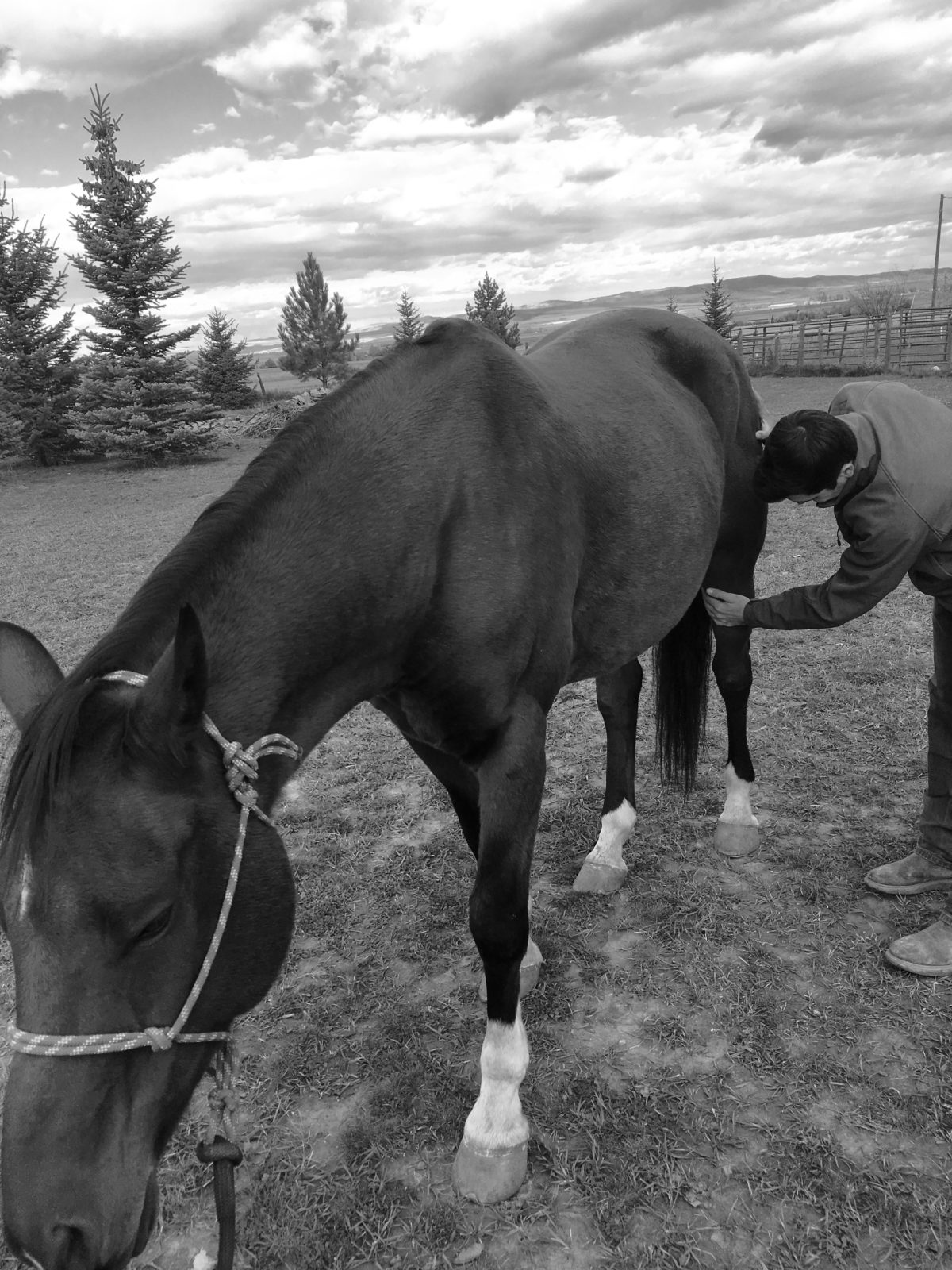
5. The horse must obediently give his hind leg if asked to do so. At the same time, both the horse and the person must be able to maintain a comfortable posture and behave freely.
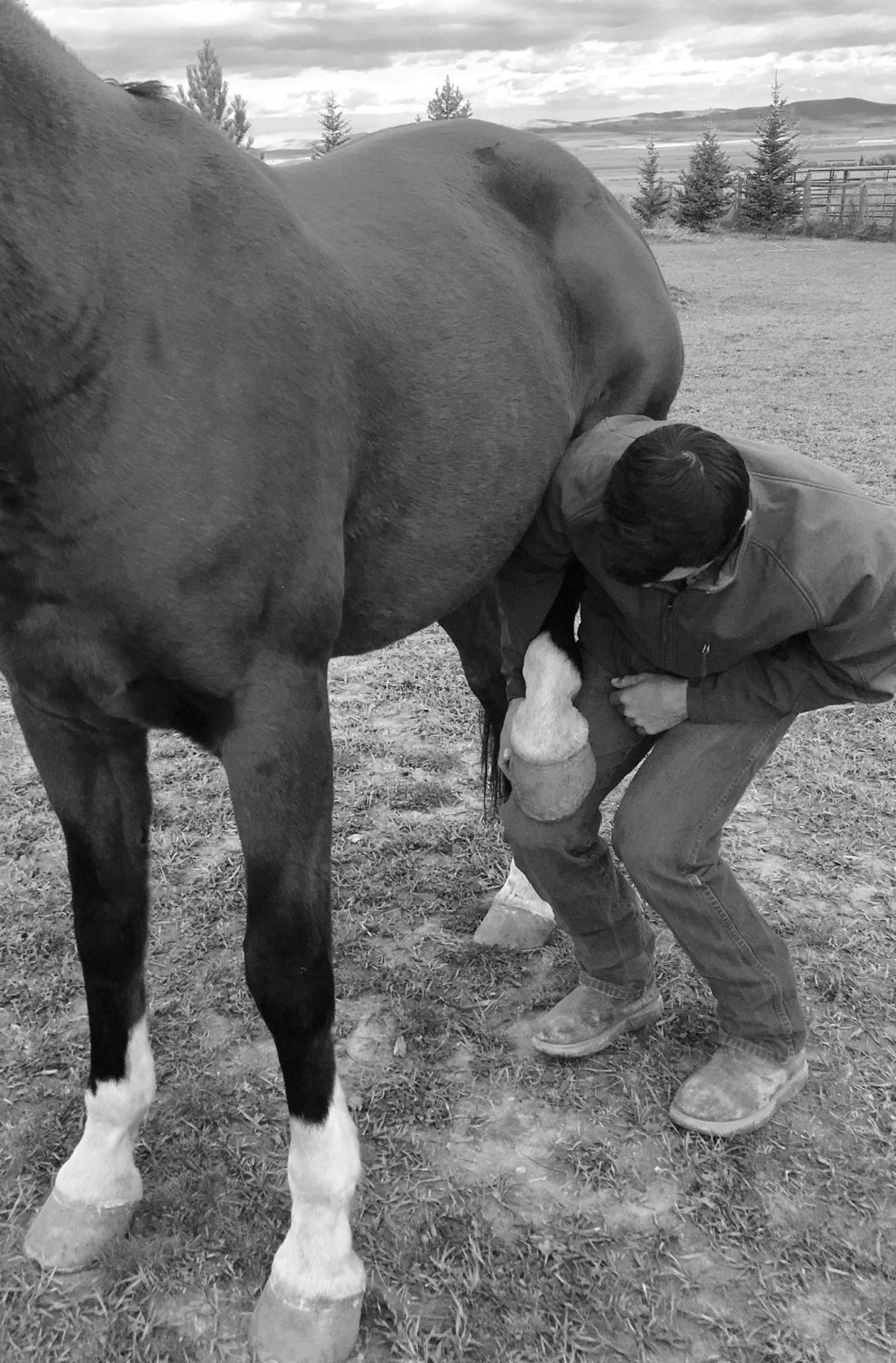
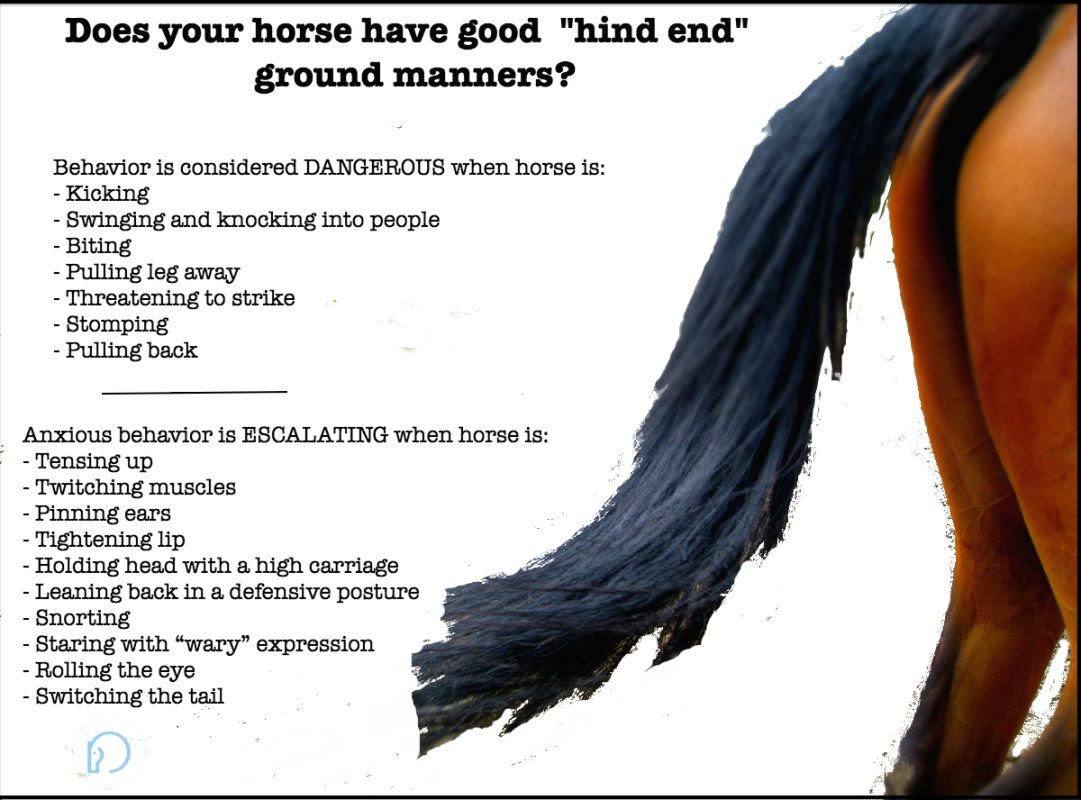
Council: wrap a rope around the pastern of the horse’s hind leg and pull up, asking the horse to lift the leg, yielding to pressure. This is a good intermediate step for the horse to learn to put his foot in your hand.
Strive for a relationship with your horse based on mutual respect and trust. No matter what manipulations and exercises are done in the back of the horse, relaxation and trust should always be the end goal. Maintaining these standards will go a long way in training the horse as well as keeping it safe. If you feel uncomfortable handling a horse that has shown unsafe or nervous behavior, find a knowledgeable person who can help. But whatever you do, don’t ignore bad behavior!
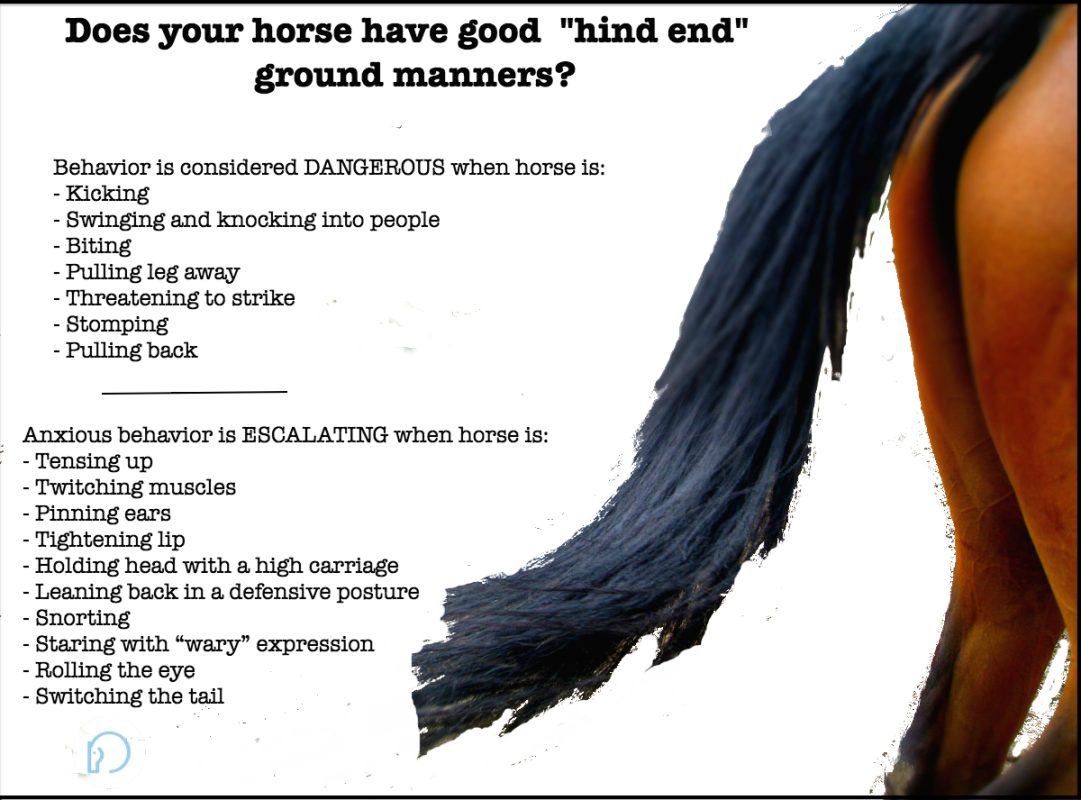
Is your horse’s hindquarters well mannered?
The behavior is dangerous if the horse:
- beats;
- leans or beats with hooves on a person;
- bites;
- pulls back the leg you took;
- shows resistance;
- dancing;
- pulls back.
Signs of deterioration in behavior:
- horse nharnesses;
- strengthens muscles;
- lays ears back;
- strains lips, “grin”;
- raises his head high;
- adopts a defensive posture;
- makes aggressive squeals and other sounds (loud snoring);
- worries;
- the whites of the eyes are visible;
- tail.
To make the final shift in a positive direction, use a routine. Routine helps the horse learn better and remember what he has learned for longer.
So, for example, you can prepare in advance for the farrier’s visit. It appears every few weeks and the manipulations carried out can frighten the horse. Tools making loud noises, touching the hind legs and fixing them in a raised position, suspicious smells become something new and sudden, and not part of the horse’s daily expectations. The horse, quite logically and justifiably (from its point of view) can begin to behave badly.
What can you do? Touch the horse more often, raise its hindquarters, guide or leave it at the crossroads in the place where shoeing is usually done, etc. Such “preparation” will have its advantages. For example, if a horse suddenly injures a hind leg, the baseline confidence achieved will help you and your veterinarian during treatment.
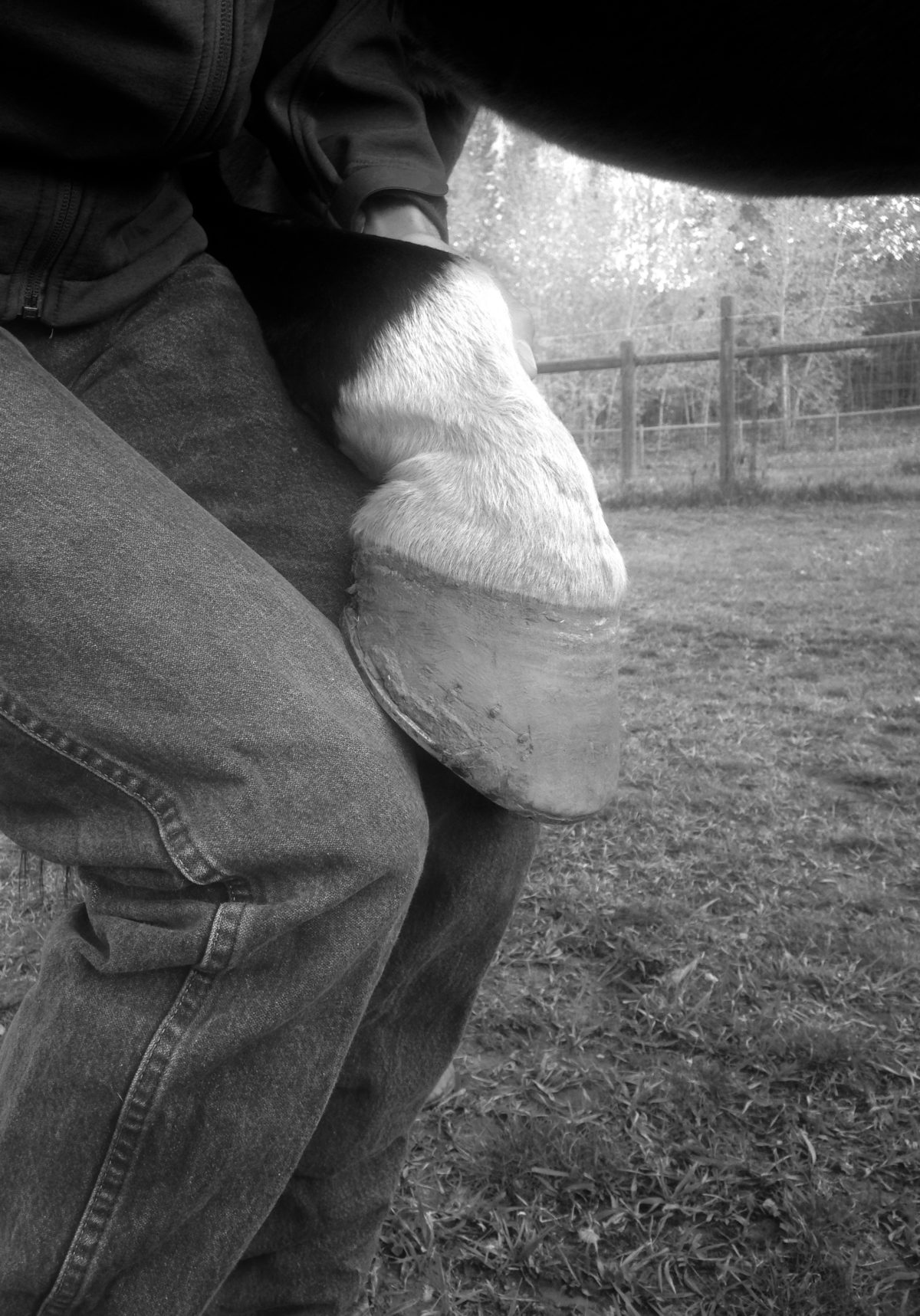
Regardless of the discipline a horse is engaged in, the main responsibility of its owner is to improve its manners and behavior on the ground. Horses are unpredictable, so don’t neglect the basics – no one wants to get hurt because you decide not to take the time to graft. good manners horse backside!
Anna Carroll (source); translation Valeria Smirnova.



